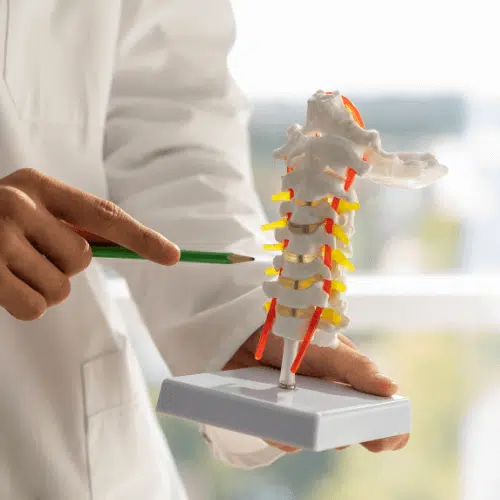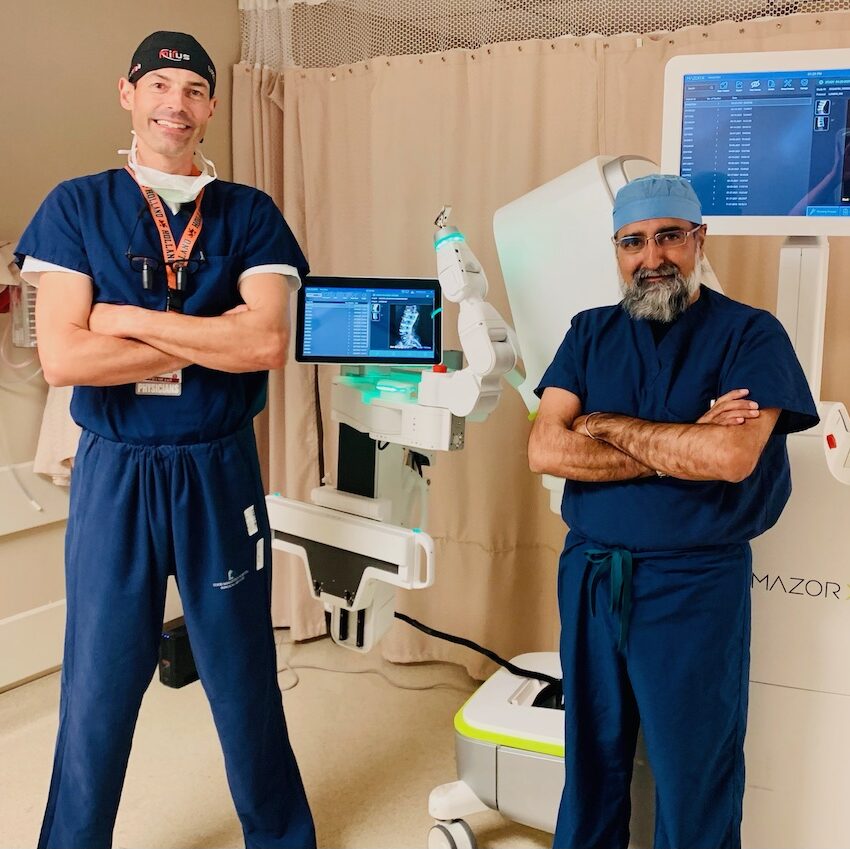What Spine Issues Normally Result In Operation for Alleviation?
Spinal column problems that require surgical treatment typically occur when conservative treatment alternatives stop working to provide adequate remedy for relentless pain and practical disability. Conditions such as herniated discs, spinal stenosis, and degenerative disc illness often result in procedures targeted at easing symptoms and recovering mobility. Recognizing the certain signs for surgical treatment and the kinds of interventions readily available is crucial for both individuals and doctor. As we explore the intricacies bordering these spine issues, it comes to be obvious that the decision to pursue surgical alternatives is multifaceted and warrants careful factor to consider.

Herniated Discs
Herniated discs are a common spinal problem that regularly results in surgical intervention when traditional therapies fall short. This condition happens when the soft inner gel of a back disc extends through a tear in the tougher outer layer, potentially compressing close-by nerves. Symptoms commonly consist of localized pain, radiating pain in the limbs, and neurological shortages such as tingling or weakness.

Surgery intends to reduce discomfort and recover function by getting rid of the herniated section of the disc or stabilizing the influenced spine section. While several people experience considerable improvement following surgery, it is essential to evaluate the advantages and dangers in assessment with a certified spinal column specialist. Inevitably, prompt intervention is important to boost and avoid further complications high quality of life for individuals dealing with this incapacitating problem.
Back Constriction
Experiencing back stenosis can dramatically impact an individual's mobility and high quality of life. This condition happens when the spine canal narrows, placing pressure on the spine and nerves. Commonly seen in the lumbar (lower back) and cervical (neck) regions, spinal constriction frequently arises from degenerative adjustments connected with aging, such as arthritis, disc herniation, or enlarging of tendons.
Signs and symptoms of spinal constriction can vary, but they generally consist of discomfort, feeling numb, tingling, and weak point in the extremities. These signs may aggravate with activity or prolonged standing and often enhance with remainder. In extreme situations, individuals might experience troubles with balance and control, bring about a heightened threat of falls.
When conventional treatments, such as physical treatment, drugs, and way of living adjustments, fail to ease signs and symptoms, surgical intervention may be considered. Procedures like laminectomy or spinal fusion objective to decompress the afflicted nerves and support the back. Early medical diagnosis and therapy are critical in handling spine constriction efficiently and protecting mobility, ultimately enhancing the patient's total top quality of life.
Spondylolisthesis
Spondylolisthesis occurs when one vertebra slides onward over the one below it, possibly resulting in spinal instability and nerve compression. This problem can emerge from various elements, including congenital flaws, degenerative changes, trauma, or repeated stress and anxiety injuries. Symptoms typically consist of lower neck and back pain, stiffness, and emitting pain in the legs, which can dramatically influence daily activities and general lifestyle.
Diagnosis generally involves a complete clinical examination, imaging research studies such as X-rays or MRI, and evaluation of neurological feature. The level of slippage is categorized into grades, with greater grades showing extra extreme variation and Continued a better likelihood of surgical intervention.

Very early diagnosis and ideal administration are crucial in boosting and avoiding more difficulties client end results. As spondylolisthesis can cause persistent discomfort and impairment, timely treatment is crucial for recovering spinal health and wellness.
Degenerative Disc Illness
Degenerative Disc Disease (DDD) is a condition characterized by the progressive degeneration of the intervertebral discs, which function as crucial shock absorbers between the vertebrae of the spine. As these this hyperlink discs shed hydration and elasticity with time, they come to be much less reliable at supporting the vertebrae, bring about boosted friction and stress on the spine frameworks.
Patients with DDD frequently experience symptoms such as persistent pain in the back, stiffness, and decreased movement (best spine surgeons in st louis mo). The problem can additionally result in nerve compression if the deteriorated discs bulge or herniate, leading to radicular discomfort, weak point, or feeling numb in the limbs
Diagnosis commonly includes a mix of physical exams, imaging research studies like MRI or CT scans, and individual background to examine the severity of disc deterioration and its effect on daily tasks. Therapy choices variety from conservative measures, including physical treatment and pain management, to even more invasive procedures when conventional steps stop working. Surgical treatments, such as spinal combination or synthetic disc substitute, might be suggested for people with substantial discomfort and functional impairment. In general, early treatment and tailored monitoring strategies are important for minimizing the effects of DDD and improving individual results.
Spine Growths
Spinal tumors, which can be benign or malignant, represent one more significant reason of spine conditions that might require medical intervention (best spine surgeons in st louis mo). These tumors can originate within the spinal column (key lumps) or metastasize from various other components of the body (second tumors) Their presence can lead to different symptoms, including local pain, neurological deficiencies, and modifications in mobility
Surgical treatment for spinal tumors commonly intends to reduce signs by removing the tumor, supporting the back, and attending to any compressive impacts on the spine cord or nerves. Signs for surgical procedure normally consist of substantial pain not responsive to traditional treatments, or neurological disability arising from the growth's growth.
/0x0:512x512/prod01/channel_2/media/mccms/content-assets/academics/residencies-and-fellowships/spine-surgery-fellowship-minnesota/overview/final-512X512-OR710-2020-10-05_0007.jpg)
It is critical for patients providing with signs and symptoms symptomatic of back lumps to go through complete analysis evaluations, including imaging studies and biopsies, to identify the suitable course of activity (best spine surgeons in st louis mo). Early discovery and treatment can dramatically enhance client results and high quality of life
Final Thought
In recap, different spine problems, consisting of herniated discs, spine stenosis, spondylolisthesis, degenerative disc condition, and spine growths, usually demand medical treatment when traditional therapies fall short to offer relief. These problems cause substantial discomfort and functional disability, prompting the consideration of treatments such as discectomy, spinal fusion, and laminectomy. Ultimately, medical choices aim to ease discomfort, improve mobility, and recover quality of life for individuals influenced by these disabling spinal conditions.
Conditions such as herniated discs, back constriction, and degenerative disc condition frequently lead to medical treatments intended at relieving symptoms and recovering wheelchair.Herniated discs are a common back problem that often leads to surgical intervention when conventional treatments fail. Surgical interventions, such as back combination or man-made disc replacement, may be suggested for patients with considerable pain and useful impairment.Spinal growths, which can be benign Click Here or malignant, represent one more significant cause of spinal problems that might require medical intervention.In recap, various spinal column concerns, including herniated discs, spine stenosis, spondylolisthesis, degenerative disc illness, and spinal tumors, usually require surgical treatment when traditional therapies fail to supply alleviation.